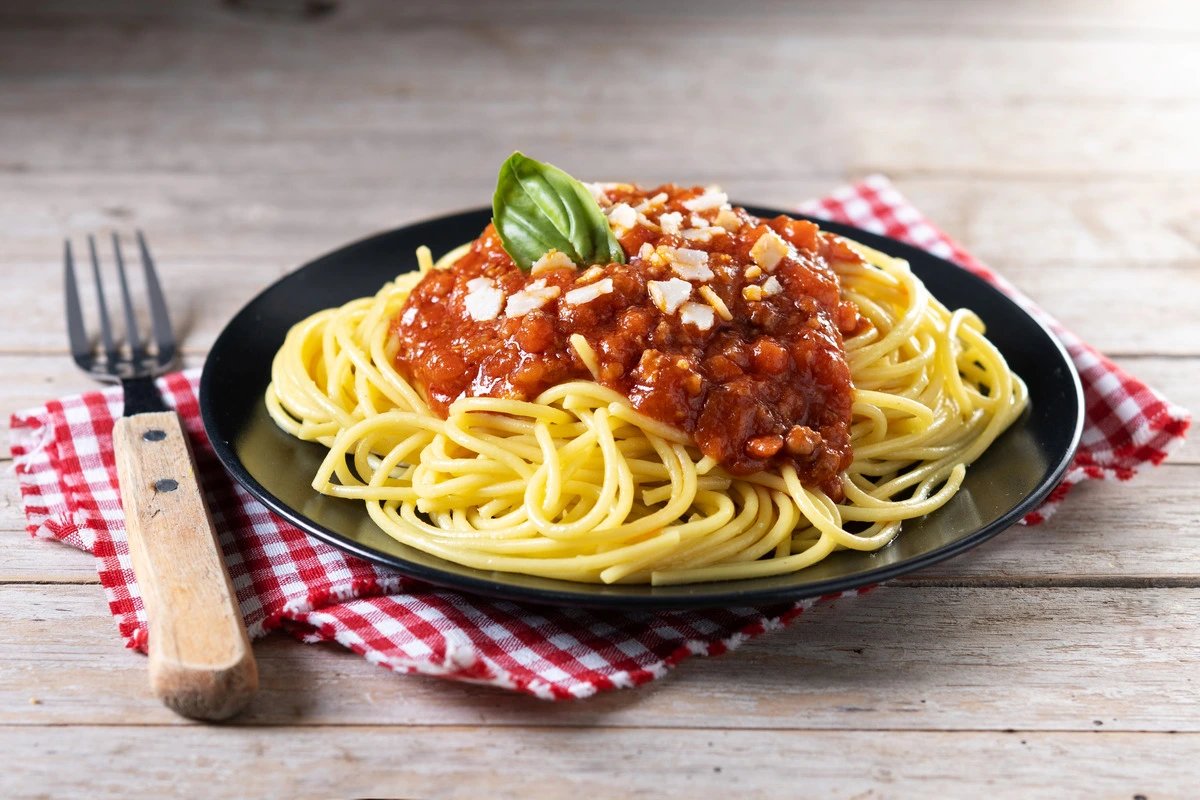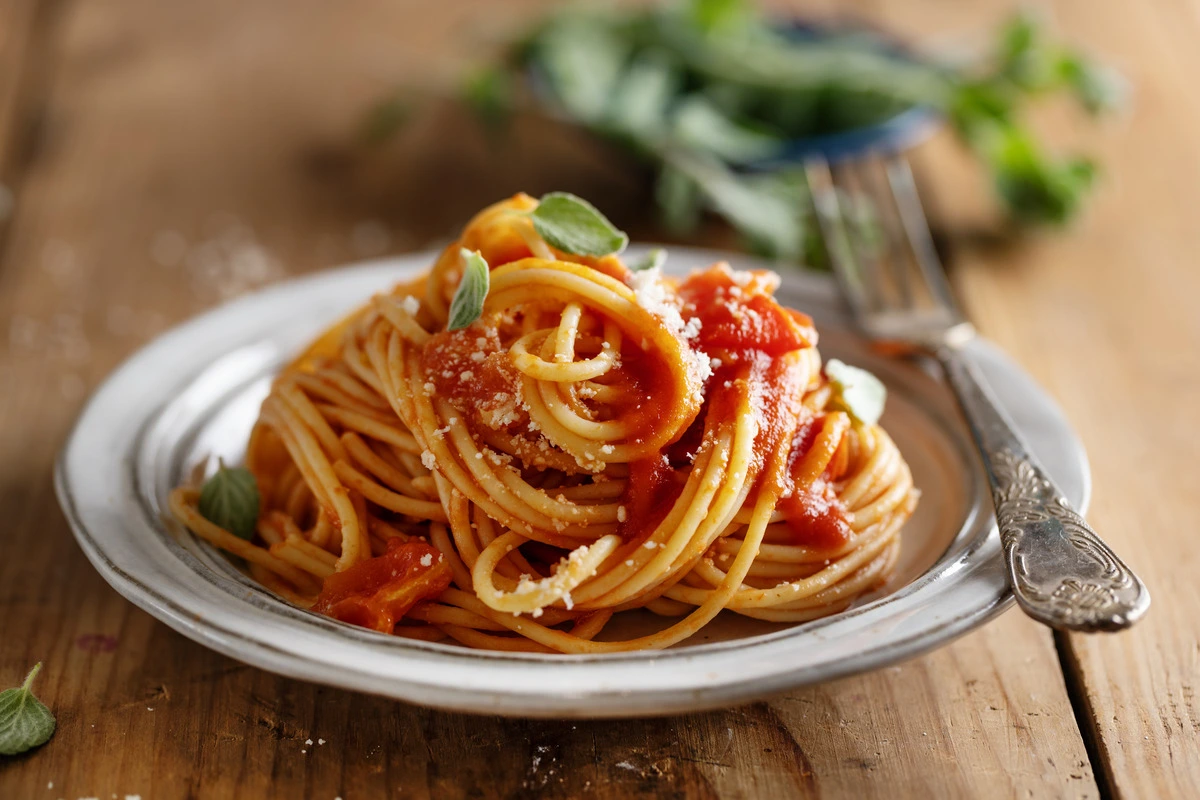Spaghetti Bolognese is a beloved Italian classic, renowned for its rich, hearty sauce and comforting taste. Originating from Bologna, Italy, this dish has made its way into kitchens around the world, becoming a staple in family dinners and restaurant menus alike. The recipe combines ground meat, tomatoes, onions, and a blend of herbs, creating a sauce that clings perfectly to the spaghetti, making every bite a delicious experience. In this article, we’ll dive deep into the art of making the perfect Spaghetti Bolognese, explore some variations, and answer common questions about this timeless dish.
What makes Spaghetti Bolognese authentic?
Authentic Spaghetti Bolognese, or “Ragù alla Bolognese,” traditionally features ingredients like minced beef, pancetta, onions, carrots, celery, tomatoes, milk, and white wine. It’s slowly cooked to enhance the flavors and served over tagliatelle, a flat ribbon pasta. Unlike its Americanized version, which often uses ground beef, canned tomato sauce, and spaghetti, the traditional recipe focuses on fresh ingredients and slow cooking techniques.
Can Spaghetti Bolognese be made vegetarian?
Yes, Spaghetti Bolognese can easily be made vegetarian by substituting ground meat with plant-based alternatives like lentils, mushrooms, or textured vegetable protein (TVP). These substitutes maintain the hearty texture of the dish while providing a flavorful, nutritious alternative.
Step-by-Step Recipe Guide:
🥦 Ingredients
- 2 tbsp olive oil
- 1 large onion, finely chopped
- 2 garlic cloves, minced
- 1 carrot, grated
- 500g ground beef or pork (or a mix of both)
- 100g pancetta, diced
- 2 cans (400g each) chopped tomatoes
- 2 tbsp tomato paste
- 1 cup beef broth
- 1/2 cup red wine (optional)
- 1 tsp dried oregano
- 1 tsp dried basil
- 2 bay leaves
- Salt and pepper to taste
- 1/2 cup whole milk
- Freshly grated Parmesan cheese, for serving
- Spaghetti or tagliatelle, for serving
🍅 Directions
- Heat the Olive Oil: In a large pot or skillet, heat the olive oil over medium heat. Add the chopped onion, garlic, and grated carrot. Sauté until the vegetables are soft and translucent, about 5-7 minutes.
- Cook the Meat: Add the ground beef or pork and diced pancetta to the pot. Cook, breaking the meat apart with a spoon, until browned. Drain any excess fat if necessary.
- Add Tomatoes and Broth: Stir in the chopped tomatoes, tomato paste, and beef broth. If using, pour in the red wine. Bring the mixture to a simmer.
- Season the Sauce: Add the dried oregano, dried basil, bay leaves, salt, and pepper. Stir well to combine.
- Simmer Slowly: Reduce the heat to low and let the sauce simmer for at least 1 hour, stirring occasionally. The longer the sauce simmers, the richer the flavors will become.
- Incorporate Milk: Add the milk and stir to combine. Simmer for an additional 10-15 minutes. The milk helps to soften the acidity of the tomatoes and creates a richer, creamier texture.
- Cook the Pasta: Meanwhile, cook the spaghetti or tagliatelle according to the package instructions. Drain and set aside.
- Serve and Garnish: Serve the Bolognese sauce over the cooked pasta, and top with freshly grated Parmesan cheese. Enjoy!
Recipe Variations
1. Vegetarian Bolognese
Replace the ground meat with a mix of finely chopped mushrooms, lentils, and zucchini. This variation offers a similar texture and depth of flavor, perfect for those looking to cut down on meat consumption.
2. Spicy Bolognese
For a spicier kick, add 1-2 chopped red chilies or a teaspoon of red pepper flakes to the sauce while sautéing the onions and garlic. This variation is ideal for those who enjoy a bit of heat in their dishes.
3. White Bolognese
Also known as “Bianco,” this version skips the tomatoes and instead uses a blend of white wine, cream, and chicken broth, providing a lighter and creamier sauce.
4. Vegan Bolognese
Use lentils or chickpeas instead of meat and substitute dairy milk with almond or oat milk. Choose a plant-based cheese or nutritional yeast for a vegan-friendly garnish.
5. Quick Bolognese
If short on time, use pre-made tomato sauce and add sautéed vegetables and cooked ground meat. This shortcut version still delivers a delicious result with minimal effort.
Frequently Asked Questions (FAQs)
Q1: How can I store and reheat Spaghetti Bolognese?
To store, place the Bolognese sauce in an airtight container and refrigerate for up to 3 days. For longer storage, freeze it for up to 3 months. To reheat, thaw in the refrigerator if frozen, then warm gently on the stove or in the microwave.
Q2: What are some good side dishes to serve with Spaghetti Bolognese?
Spaghetti Bolognese pairs well with a fresh green salad, garlic bread, or a simple vegetable side dish like steamed broccoli or roasted vegetables. A glass of red wine, such as Chianti or Merlot, also complements the flavors nicely.
Q3: Can I use a different type of pasta?
Yes, while Spaghetti is traditional, Bolognese sauce works well with other types of pasta like fettuccine, pappardelle, rigatoni, or penne.
Internal Linking Opportunities
Consider linking to relevant recipes and guides from Joseph Recipes for further exploration:
- Traditional Chilaquiles Recipe for those interested in hearty meals with rich sauces.
- Peach Cobbler with Cake Mix as a delightful dessert to follow a comforting Italian meal.
- Homemade Mexican Pizza: A Delicious Guide for readers looking to try another classic comfort food with a twist.
Conclusion
Spaghetti Bolognese is more than just a pasta dish; it’s a celebration of Italian culinary tradition, a meal that brings families together, and a recipe that can be adapted to suit any taste or dietary preference. Whether you follow the traditional recipe or try one of the exciting variations, this dish will surely become a favorite at your dinner table.



